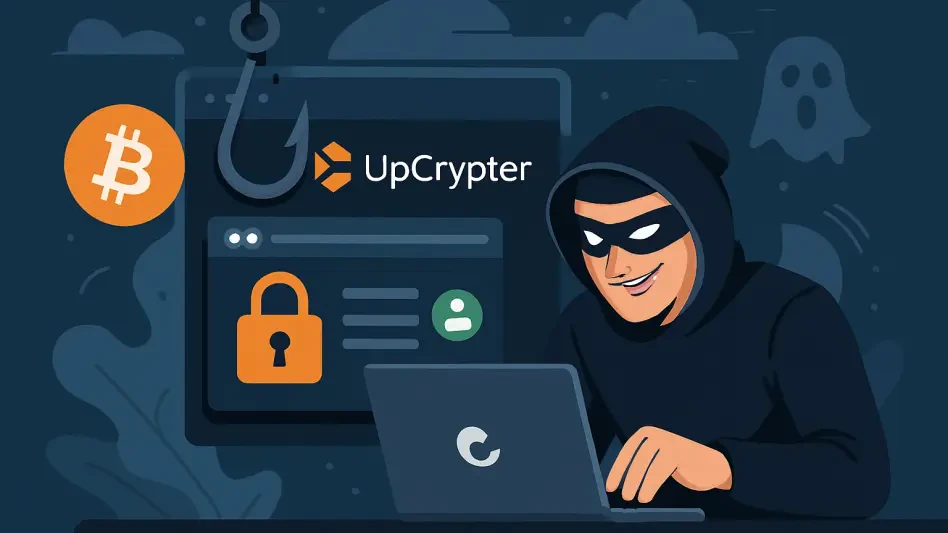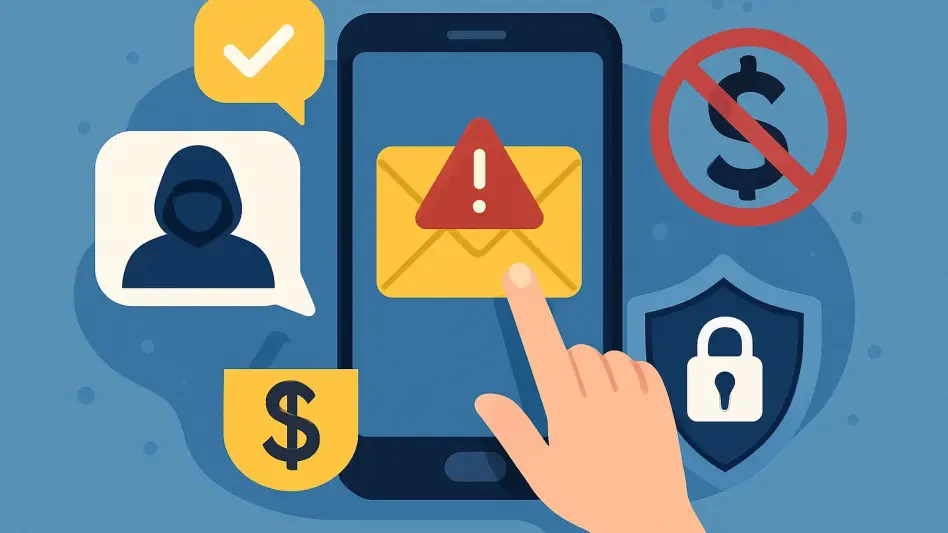In an era where cyber threats evolve at an alarming pace, a new phishing campaign driven by the UpCrypter malware has emerged as a formidable challenge for organizations across the globe, deploying Remote Access Tools (RATs) like PureHVNC, DCRat, and Babylon RAT through meticulously crafted phishing emails and spoofed websites designed to deceive even the most cautious users. These malicious efforts enable attackers to gain persistent control over compromised systems, posing a severe risk to data security and network integrity. With detection rates for UpCrypter more than doubling in a matter of weeks, the urgency to understand and counteract this threat cannot be overstated. The campaign’s reliance on advanced evasion tactics and personalized lures underscores a troubling trend in cybercrime, where attackers prioritize long-term access over quick data grabs. This pressing issue demands a deep dive into the mechanics of the attack and the robust strategies needed to safeguard systems.
Understanding the Threat Landscape
Unpacking the Mechanics of UpCrypter
The UpCrypter campaign stands out due to its intricate infection chain, which begins with highly personalized phishing emails that often mimic legitimate communications by incorporating the target’s email domain for added credibility. These emails lure users into downloading malicious JavaScript files that act as droppers for RAT payloads. What makes this attack particularly insidious is its use of obfuscated code, padded with irrelevant data to dodge traditional detection methods. Techniques such as PowerShell and .NET reflection allow payloads to execute directly in memory, avoiding disk writes that could trigger alerts. Furthermore, steganography—hiding malicious data within image files—adds another layer of evasion against static analysis. This multi-faceted approach not only highlights the technical sophistication behind the campaign but also reveals how easily accessible online tools lower the barrier for attackers to launch such threats, amplifying the risk to organizations of all sizes.
A deeper look into UpCrypter’s behavior reveals self-preservation tactics that further complicate mitigation efforts. The malware is designed to detect forensic tools, debuggers, or virtual environments like Wireshark, triggering system restarts to disrupt analysis. This adaptability showcases a shift in cybercrime toward creating persistent attack frameworks rather than one-off scams. Unlike traditional phishing aimed at stealing credentials quickly, this campaign focuses on sustained access, allowing attackers to control systems over extended periods. The rapid proliferation of UpCrypter, with detection counts surging in a short timeframe, underscores its aggressive spread across global networks. Such characteristics position it as a significant threat that exploits both human error and technical vulnerabilities, necessitating a comprehensive defense strategy that addresses multiple points of failure within an organization’s security posture.
The Scale and Impact of the Campaign
The global reach of the UpCrypter campaign cannot be understated, as it targets organizations across industries with a ferocity that has cybersecurity experts on high alert. Detection metrics indicate an exponential increase in incidents, reflecting how quickly this threat has embedded itself into corporate environments. Experts note that the campaign’s ability to install persistent malicious payloads poses a unique danger, as it can silently spread across networks, compromising entire systems without immediate detection. Common phishing lures, such as fake voicemails or invoices, remain highly effective due to their relatability, exploiting human tendencies to trust familiar formats. This blend of psychological manipulation and technical prowess makes UpCrypter a formidable adversary, capable of bypassing conventional security measures and establishing deep roots within targeted infrastructures.
Beyond individual breaches, the broader implications of UpCrypter lie in its potential for network-wide compromise. Unlike earlier phishing attacks focused on quick data theft, this campaign aims for long-term control, enabling attackers to manipulate systems, exfiltrate sensitive information, or even deploy additional malware at will. The consensus among cybersecurity professionals is that this represents a paradigm shift in attack strategies, where persistence trumps immediacy. The danger of silent propagation across corporate networks heightens the stakes, as a single compromised endpoint could serve as a gateway to widespread damage. This evolving threat landscape calls for organizations to rethink their defensive approaches, moving beyond reactive measures to proactive, multi-layered strategies that can anticipate and neutralize risks before they escalate into full-blown crises.
Building a Robust Defense Strategy
Enhancing User Awareness and Training
One of the foundational pillars in combating the UpCrypter threat is fostering a culture of cybersecurity awareness among employees, who often serve as the first line of defense against phishing attacks. Training programs should focus on recognizing deceptive lures such as fake order requests or voicemail notifications, which are crafted to exploit trust in routine communications. By educating staff on the hallmarks of suspicious emails—unusual sender addresses, urgent language, or unexpected attachments—organizations can significantly reduce the likelihood of initial compromise. However, awareness alone is not a silver bullet; it must be reinforced with simulated phishing exercises to test and improve user responses over time. Empowering employees to question and report anomalies can create a human firewall that complements technical defenses against sophisticated campaigns like UpCrypter.
Equally important is the need to contextualize training within the broader scope of evolving threats. Employees should be made aware that attackers behind UpCrypter leverage personalization tactics, such as referencing specific company details, to enhance credibility. Regular updates to training content, reflecting the latest phishing trends and techniques, ensure that staff remain vigilant against emerging risks. Additionally, fostering an environment where reporting suspicious activity is encouraged without fear of reprimand can accelerate incident detection. While user education cannot prevent all breaches, especially against highly advanced threats, it serves as a critical deterrent, shrinking the window of opportunity for attackers to exploit human error. Combining this approach with technical safeguards creates a balanced defense that addresses both behavioral and systemic vulnerabilities.
Implementing Technical Safeguards
On the technical front, deploying automated detection systems is essential to counter the sophisticated evasion tactics employed by UpCrypter. Traditional email filters often fall short against obfuscated scripts and malicious downloads, necessitating advanced tools that can identify threats in real time. Solutions such as Endpoint Detection and Response (EDR) systems and updated Web Application Firewalls (WAFs) play a crucial role in spotting anomalous behavior, such as HTML attachments triggering PowerShell activity via email clients. Enforcing strict controls like PowerShell script signing and Constrained Language Mode can further limit the execution of malicious payloads, especially for standard users without operational need for such privileges. These measures collectively strengthen system integrity by blocking unauthorized activities at their inception.
Another powerful strategy lies in Application Allowlisting, which prevents unapproved scripts and RAT payloads from running, even if they manage to infiltrate a system. Monitoring specific behavioral patterns, such as unusual PowerShell execution linked to email interactions, offers a quick method for identifying and halting attacks in progress. Keeping antivirus software and mail filters current is also vital, as many modern tools are already equipped to block UpCrypter signatures. Proactive use of threat intelligence services and Indicators of Compromise (IOCs) enables organizations to stay ahead of emerging risks by preemptively adjusting defenses. This multi-layered technical approach, when paired with user training, creates a robust shield against persistent threats, ensuring that even if one layer fails, others stand ready to mitigate damage and contain breaches before they spiral out of control.
Looking Back and Moving Forward
Reflecting on the UpCrypter phishing campaign, it became evident that its rapid spread and advanced evasion techniques challenged organizations in unprecedented ways. The focus on long-term system control rather than immediate data theft marked a significant evolution in cyberattack methodologies. Cybersecurity professionals united in their assessment that the campaign’s success hinged on deceptive personalization and technical sophistication, but it was not an insurmountable threat. By integrating employee training with cutting-edge detection tools and stringent access controls, many businesses successfully reduced their exposure to such risks. The response to this threat underscored the importance of adaptability in the face of ever-changing cyber dangers. Moving forward, organizations must prioritize continuous improvement of their security frameworks, leveraging threat intelligence to anticipate future campaigns. Investing in both human and technical defenses remains the most effective path to safeguarding against persistent and sophisticated attacks like those driven by UpCrypter.








